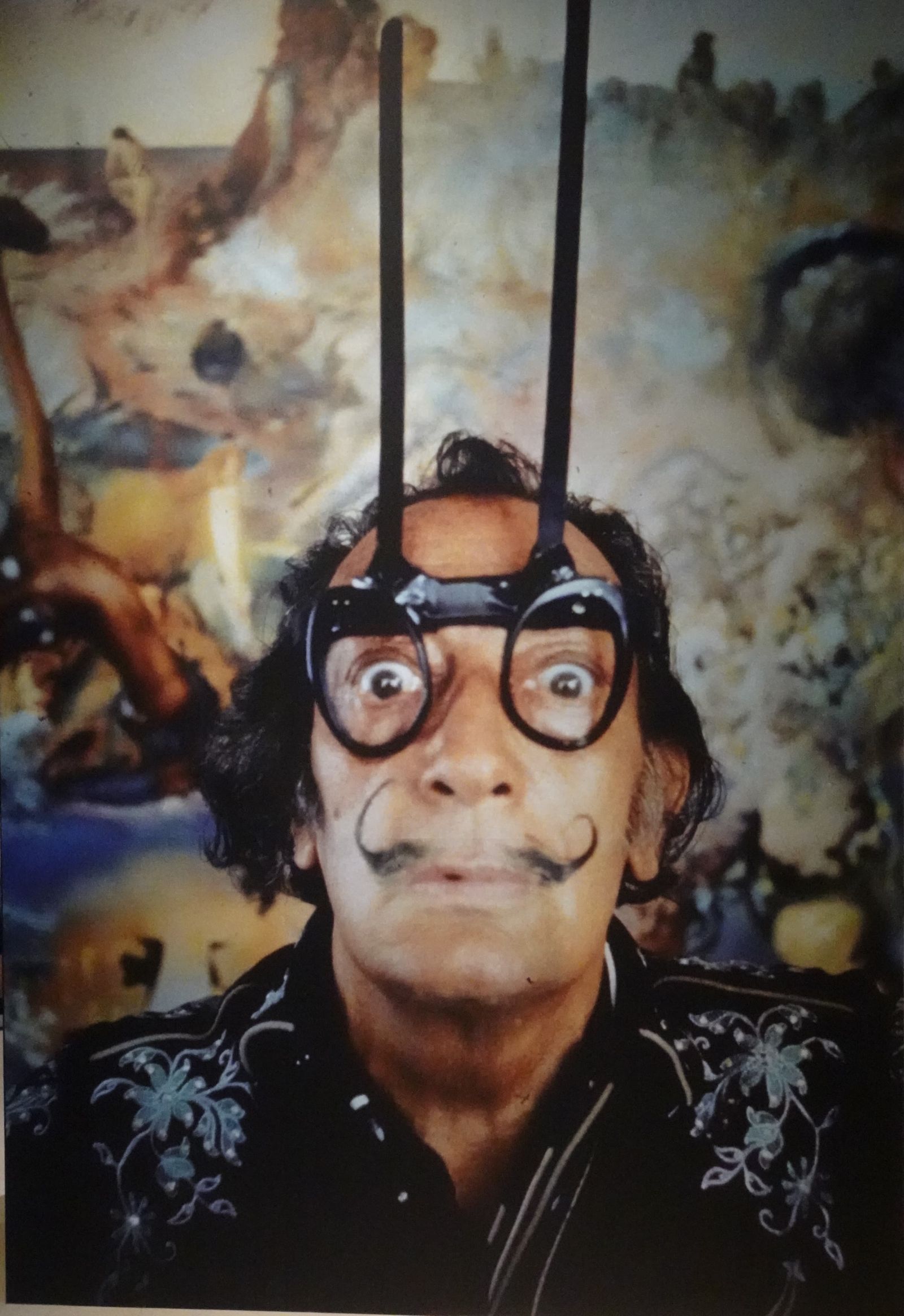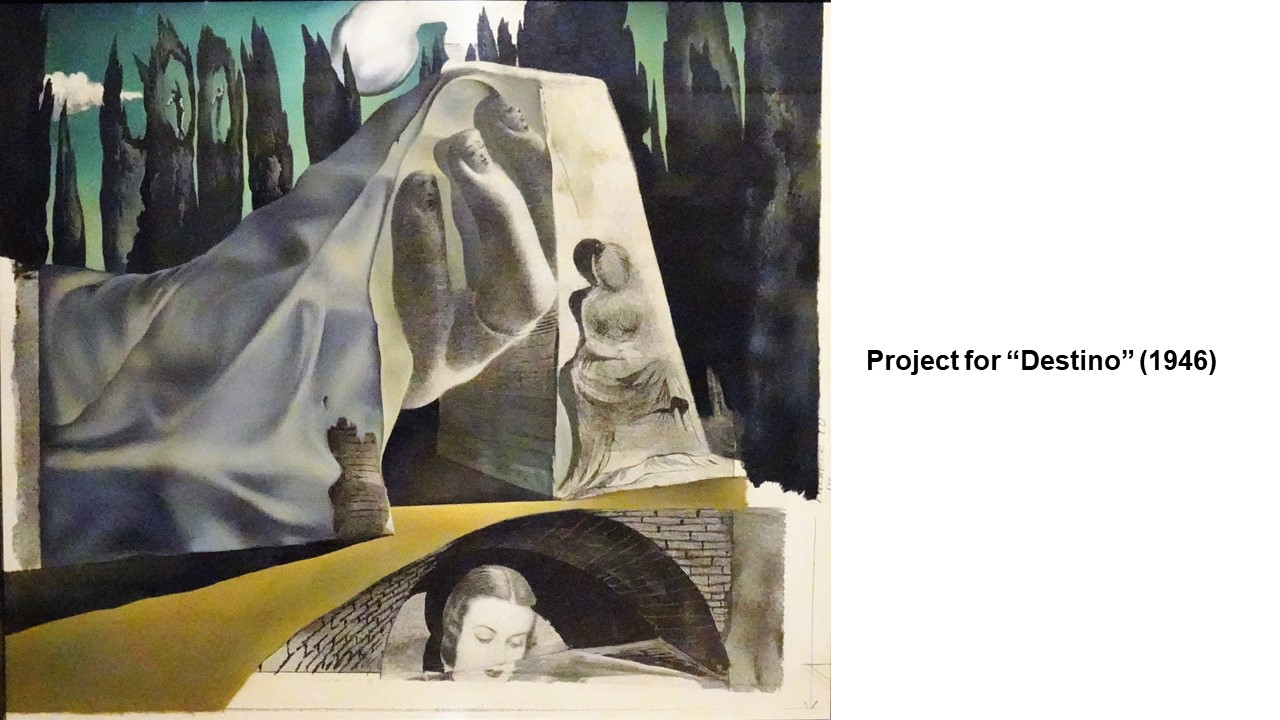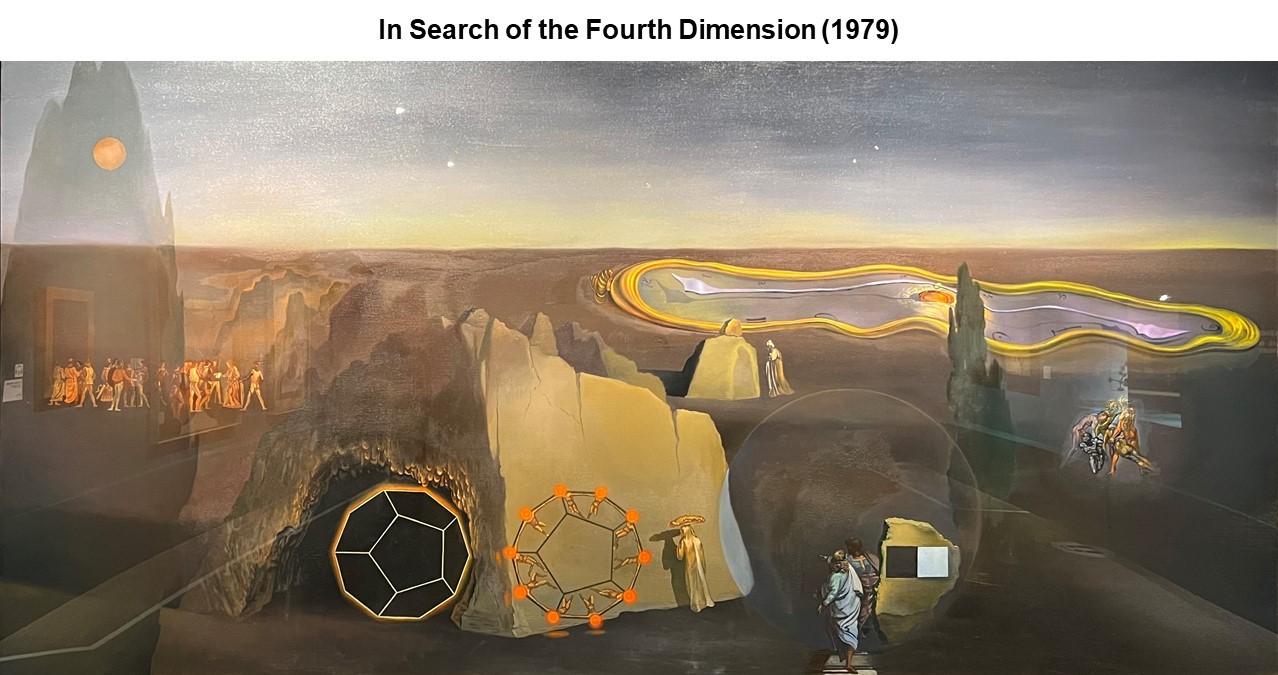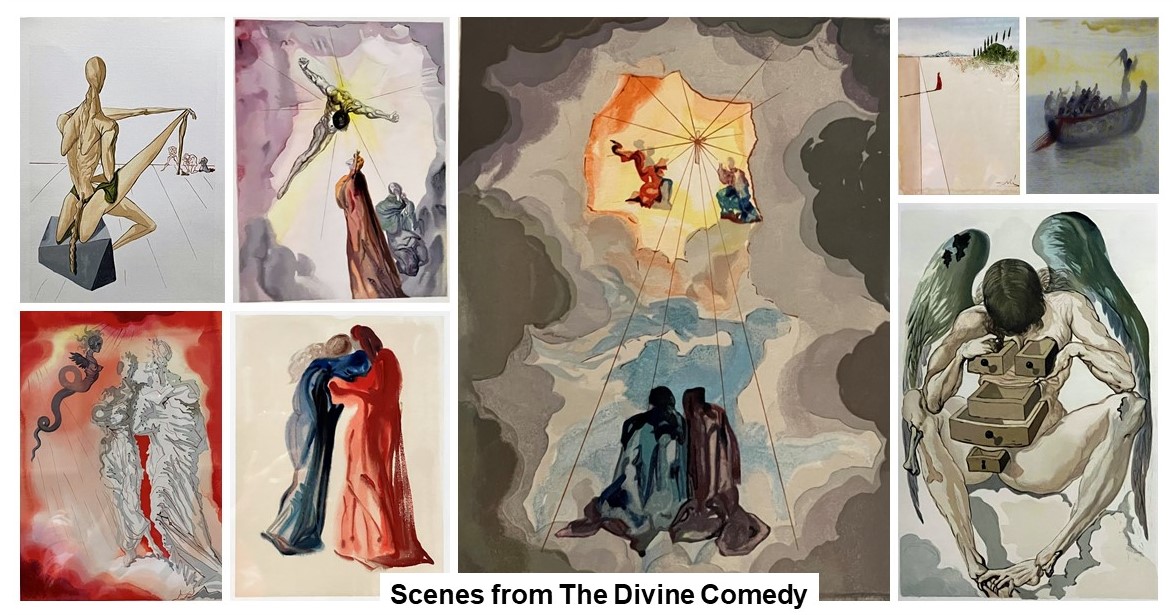Life & Art
Salvador Dali – genius or fruit cake?
The exhibition at the CKS Memorial Hall provides ample food for thought
By Mike Jewell

"I am not strange. I am just not normal."
Salvador Dali
"Fruit cake" had long been my dismissive characterisation of Salvador Dali, leading me to hurry past any of his works in galleries, in search of Renoir, Monet, Da Vinci, Rembrandt and other artists with whom I felt much more comfortable.
Now, after visiting the excellent "Salvador Dali, Mind of Genius" exhibition in the Chiang Kai-shek Memorial Hall in Taipei, I have completely revised my opinion. I still agree with Dali's own observation that he was "not normal", but, if nothing else, the exhibition reveals what an immense talent Dali was. He was exceptionally gifted as both a draughtsman and a painter, a fact so clearly demonstrated in the exhibition's centrepiece, the complete collection of 100 watercolours he produced to illustrate Dante's monumental poem of the Renaissance era, the Divine Comedy.
More of the Divine Comedy project later, but much of Dali's legendary status stems from his undoubted eccentricity and his propensity for self-promotion and creating a sensation, so much so that the quality of his art is often obscured. It is very easy to do as I have done over the years and see him as little more than a caricature, represented by an ornate waxed moustache and a few melting clocks.
The current exhibition, the first of Dali's work in Taipei for several years, readily dispels that idea. The show, co-organised by the Gala-Salvador Dalí Foundation, which he himself set up, takes visitors through Dalí's life and the wide range of fields in which he worked, such as architecture, sculpture and theatre, as well as painting.
In addition to the Divine Comedy watercolours, created in the 1950s, there are early paintings from the 1920s, together with surrealist works and others from his post-surrealist period. There are examples of set designs from the 1940s and continuous showings of "Destino," an animated short film created in collaboration with the Walt Disney Company at that time, but only released in 2003.

Despite the range of works on display and the well-written commentary provided, the exhibition can only give glimpses of the man, of his brilliance, of his showmanship, of his obsessions and his many neuroses. The exhibition rightly focuses on Dali's artistic creations, giving visitors the chance to appreciate the quality of the work without being submerged beneath the weight of Dali's over-the-top personality and his headline grabbing antics. These, though, are an essential part of the Dali legend and it is worthwhile reflecting briefly on his life story to give some context to his legacy.
From an early age, he delighted in being different. He was dreamy, imaginative, self-centred and spoiled, growing up in comfortable middle class surroundings. His mother, whom he idolised, indulged and encouraged his obvious creative talent. He was just 14 when he held his first exhibition and later gained a place at the Royal Academy of Fine Arts of San Fernando in Madrid but, once there, felt there was more to learn about the latest trends in Paris from French art magazines than from his out of touch teachers. He declared "I am very sorry, but I am infinitely more intelligent than these three professors, and I therefore refuse to be examined by them. I know this subject much too well!". Understandably they flunked him!
Alongside his innate belief in his own superiority, Dalí was also gaining attention as a flamboyant eccentric. He had long hair and sideburns, dress coat, stockings, and knee-breeches in the style of a 19th century English dandy. Definitely not a shrinking violet.
"Surrealism is not a movement. It is a latent state of mind perceivable through the powers of dream and nightmare."
While studying, Dali embraced a range of artistic styles and his extraordinary technical ability as a painter was obvious. He was increasingly attracted to the French Surrealists, such as Jean Arp, René Magritte and Max Ernst, who were applying the new, psychoanalytic theories of Sigmund Freud to painting and writing. Dalí was well acquainted with Freud and his ideas about sexual repression taking the form of dreams and delusions, and he was fascinated with the Surrealists' attempts to capture these dreams in paint, seeking to establish the "greater reality" of the human subconscious over reason. This was the genesis of Dali's mature artistic style and, in the 1930s he emerged as the world's foremost exponent of surrealism, portraying a dreamworld in which commonplace objects are juxtaposed, deformed, or otherwise metamorphosed in a bizarre and irrational fashion.
Dali's paintings are packed with images and symbolism, Freudian imagery, such as staircases, keys, dripping candles, but also a host of his own symbols, which had special, usually sexual, significance to him alone: grasshoppers, ants, crutches, sea urchins, and rotting donkeys. After meeting him, Freud was heard to say, "That boy looks like a fanatic!"
Understanding Dali's paintings is a real challenge and Dali's own words show that this is very much as he intended
"The fact I myself do not understand what my paintings mean while I am painting them does not imply that they are meaningless."
"What is important is to spread confusion, not eliminate it."
"The secret of my influence has always been that it remained secret."
Arguably the best known of his surrealist works is The Persistence of Memory, painted in 1931 and showing melting watches in an eerily calm landscape. It remains securely ensconced in New York's Museum of Modern Art, but the CKS exhibition is displaying In Search of the Fourth Dimension, albeit a much later work (1979), but which depicts much of the same imagery, including the signature melting clock. When viewed close up, Dali's finesse and technical mastery is easy to appreciate.

This period is often considered to be Dali's finest and coincides with the time when he met and fell in love with Gala, who was to be his companion and his muse until her death in 1982. This was also the time when Dali achieved international fame and became recognised as "surrealism's most exotic and prominent figure."
Moving on from Surrealism
By the end of the 1930s, Dali had drifted away from the Surrealists, his ambivalent political views being at odds with the overt left wing stance of the group. His painting style changed, too. Over the course of World War II, he began to move on from Freud's psychoanalytical teachings and increasingly reflected atomic theory in a style he christened Nuclear Mysticism.
Images of atomic particles appeared in his work soon after the bombs dropped on Hiroshima and Nagasaki and strands of DNA appeared from the mid-1950s. Examples of this new direction are displayed in the CKS exhibition.
Dali still continued to challenge conventional perceptions of reality and the exhibition has a fascinating section devoted to depictions of alternative reality, pictures which reveal a completely different image when viewed through a mirror or from a distance. The most stunning example for me is the picture which, from the back of the hall, is apparently a portrait of Abraham Lincoln, but which transforms into an image of a naked Gala looking out into the Mediterranean as you get closer to it. Masterful and mind-blowing!

Dali and Gala visited the US frequently and set up home there during the War. In unashamed pursuit of filthy lucre, he devoted much of his creative energy to designing jewellery, clothes and furniture, painting theatre sets, writing, and designing displays for store windows.
He also worked on enhancing his notoriety with his distinctive appearance and wardrobe, his pet ocelot and his numerous outrageous self-promotional stunts, such as turning up for a lecture in a Rolls Royce stuffed with cauliflower! He made regular TV appearances and took part in commercials, anything to remain in the public eye and his fame barely dimmed, even though his later years back in Spain were much less happy, dogged by ill health, drug addiction and depression.
Dali and The Divine Comedy
While many commentators insist that Dali's surrealist work was his finest, others see his Divine Comedy project as at least its equal. The fusion of Dante Alighieri's epic poem with the extreme avant-garde artistic talents of Salvador Dali might seem like a certain route to the devaluation of one of the foremost literary achievements of all time. However, the result is an outstanding series of watercolours which visualise Dante's Renaissance poetry through Dali's idiosyncratic psychoanalytic lens. In many ways, Dante's imagining of the afterlife is the perfect vehicle for Dali's own exploration of the dreamworld and the subconscious.
The Divine Comedy is the vivid account of Dante's imagined journey on Good Friday 1300. Lost in a dark wood he is attacked by three beasts: a panther, a lion and a she-wolf. Dante's platonic love, Beatrice sends the classical poet Virgil to his aid, and he guides Dante through the wood and beyond to Hell, Purgatory, and ultimately Heaven.
Dante imagined Hell as a configuration of nine descending circles where the damned are tormented for all eternity by terrible monsters and fiendish tortures. Dante and Virgil make their escape via a secret pathway to Purgatory, which is portrayed as a vast mountain surrounded by seven circles where souls are purged of their sins before making the journey on to Heaven. As Dante looks to complete the journey and arrive in Paradise, Virgil retreats, allowing Beatrice to guide Dante in the company of angels to the presence of God. Beyond the fantastic story of Dante's journey, at a deeper level The Divine Comedy represents, allegorically, the journey through life in the search of purpose and higher values.
Dali's association with The Divine Comedy is almost as tortuous a journey as Dante's. It began in 1950, when Dali was embracing Catholicism much more readily than before. He painted one of his best known pictures, The Madonna of Port Lligat, following an audience with the Pope in Rome and this led to the Italian government retaining Dali's services to produce a series of illustrations for the Divine Comedy as a way of commemorating the 700th anniversary of their nation's greatest poet. However, the selection of a Spaniard, particularly such a controversial one, was far from popular and eventually the invitation was withdrawn.
Dali, though, was already deeply committed to the project, and he resolved to see it through. Between 1951 and 1960, he completed the 100 illustrations, one for each canto in the poem. He then collaborated with renowned French fine art publisher, Joseph Forêt, whose company released Dalí's work in 1965 as a suite of limited edition prints to accompany an exquisite six-volume set of Dante's great work. The prints were created from the original watercolours using traditional wood engraving, a laborious process that required the carving of 3,500 individual blocks by two professional experts, working under Dali's personal supervision.

Despite his fertile and unrestrained imagination, Dali remained faithful to the original magnificent poem, creating powerful scenes, quite parallel to the original text, although it was impossible for him not to interject his own interpretations, fusing his own symbols and ghosts with Dante's images. The result is a collection of fabulous distinctively Dalí images interwoven into one of the greatest works of literature.
The CKS exhibition more than does justice to the Divine Comedy project. A dark, narrow tunnel presses in on the visitor, creating a sense of foreboding as he/she heads into the first hall of Dante's journey, the realm of Hell, where the brooding ghostly apparition of Dis stands guard, daring the visitor to turn back. The 34 illustrations are displayed against flame red walls, reminding the visitor of the endless torments that await sinners.
The realm of Purgatory is altogether more optimistic, with a celestial blue theme, even though inhabitants must be prepared to undergo painful cleansing of their sins, before they can pass into the final realm of Paradise, portrayed in warm, soothing beige tones.
Emerging from my two-hour (that's pretty much double the time I usually spend in galleries, even ones I like) audience with Salvador Dali, I came away enthralled, in total awe of the artist's technical ability, spellbound by the scope of his imagination and utterly convinced of his right to be called a genius.
The exhibition runs until 13 April.